Position
Application
Tire Name
|
In fact, the e-balance designed M137, M157 and M677 have all been named verified technologies through the EPA’s SmartWay program. The new technologies of e-balance incorporate improvements in the areas of Tread Profile Retention, Bead Profile Retention, and overall Simulation for optimum tire design. |
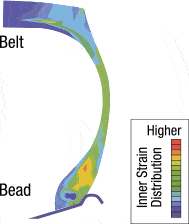 |
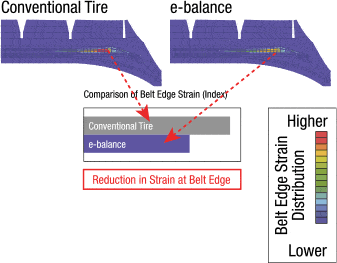 |
Tread Profile RetentionTires that utilize e-balance exhibit improved tread profile retention, meaning less service growth compared to conventional tires. The flatter tread radius provides an optimized footprint shape resulting in even wear, less irregular wear and longer life. Strain at the belt edge is reduced by approximately 30%, which also helps to improve tread profile retention. |
Bead Profile RetentionTires that utilize e-balance have higher bead stiffness to achieve improvements in bead profile retention. This leads to a reduction in irregular wear and an improvement in endurance. The bead area profile is retained even after service. Increased bead stiffness is achieved through the use of a high stiffness bead core, which is then surrounded by high stiffness rubber. A low heat build-up rubber is also used in the bead filler area. Strain at the ply turn-up edge is reduced by approximately 20% over conventional tires. |
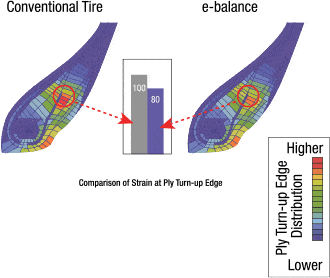 |
There are four simulation technologies utilized in e-balance. Tire irregular wear, tire profile change, tread pattern noise and vehicle handling behavior. All of these areas are analyzed with careful consideration to how they affect one another. This new simulation technology allows for optimization of tire design with much higher accuracy than what was possible before.
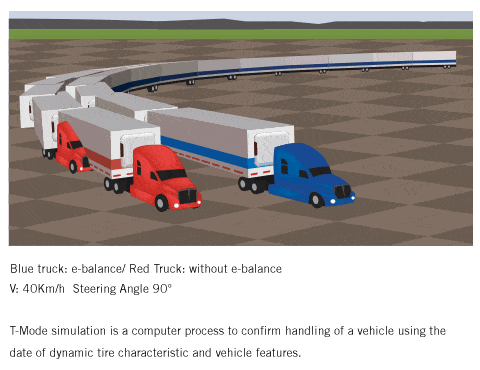
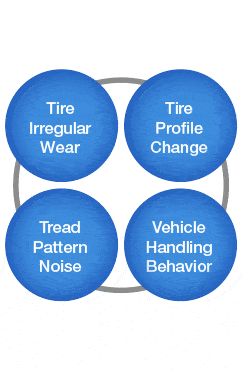
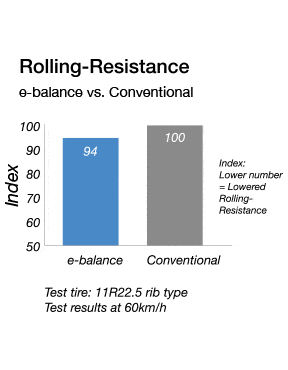
You can always feel confident when you recommend Toyo Tires commercial tires to your customers. Each is a unique combination of components and design features that meet specific service criteria.
Toyo Tires engineers study the process of irregular wear using the DSOC II (Dynamic Simulation Optimized Contact) system. DSOC II is a sophisticated computer program that simulates forces acting on a tire under actual operating conditions. The simulation reveals stress levels within the tire, how speed changes affect footprint size and shape, as well as other factors.
A truck tire in motion changes its contour or shape according to its load and operating speed. DSOC II™ Technology allows Toyo Tires engineers to observe these changes in detail. This remarkable technology has made design breakthroughs easier to achieve and has also significantly reduced development time.

 Our high-tensile, open cord construction for casing and belts keeps moisture and oxygen from entering the cord bundle to combat corrosion. The result is less fatigue, longer casing life, and higher retreadability.
Our high-tensile, open cord construction for casing and belts keeps moisture and oxygen from entering the cord bundle to combat corrosion. The result is less fatigue, longer casing life, and higher retreadability.